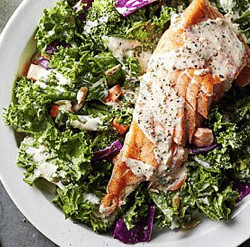3 Metabolism Boosting Exercises!
September 18, 2016Succulent mustard salmon
September 20, 2016Hurts so good… But how much is too much?
What is normal?
Exercise can cause that satisfying burning feeling during movement, the not so satisfying soreness the next day, joint discomfort during and sometimes after, chest tightness if you are still building up your fitness, and pressure and tightness in your muscles during stretching exercises. All of these are totally normal, and signs that we are working out effectively.
What’s NOT normal?
When pain has a sharp sudden onset, lasts more than a few days, or increases over time instead of getting better, these are signs that something isn’t right. Injury, strained muscles, or stressing the soft tissues around joints can all result from going too hard too fast, incorrect technique, or too much impact.
Rest up, wait until you are pain free again, or have clearance from your doctor to start exercising again. Your fitness can wait, permanent damage from jumping back in too soon can set you back months, if not years.
What about if I have osteoarthritis?
This one is counterintuitive. You may think that because you have painful joints, and exercise could cause further harm or cause more pain, that you should be avoiding it and putting your feet up instead. In fact, it’s quite the opposite.
Exercise has been shown to be the most effective non-medication treatment option for helping reduce pain and improve function. Stretching, cardio such as walking or swimming, and regular strength exercises help improve joint range of motion and strengthen the muscles surrounding joints, which means those joints are better supported.
How can I protect myself from harm?
To make sure you protect yourself from injury when exercising, whether you have existing injuries/pain or not, warm up with at least 5 minutes of light exercise followed by gentle stretches, holding each stretch for 30 seconds. Push the stretch to the point where you feel pressure, slight discomfort, but not pain.
How can I ease the normal pain that comes after exercising?
To help ease DOMS (delayed onset muscle soreness), which is that soreness that occurs in the days after a workout, you can use techniques such as gentle stretching, light massage, use low dose anti-inflammatory medication (Ibuprofen), have a warm bath, or try 15 minute hot pack/cold pack rotations.
I’m still not sure which exercises I should be doing…
If you are finding it difficult to assess for yourself how hard you should be pushing yourself when it comes to your workout, why not consider a week or two at our Devon Weight Loss & Fitness Retreat? We have expert trainers, who are particularly talented at tailoring exercises to those with joint pain, old injuries, restrictions due to their weight, and exercises for any fitness level and all sizes! See why our proven exercise program is perfect to help you lose that weight now and in the long term.
For regular weight loss recipes, diet and exercise tips, and inspiration, follow us on social media!








